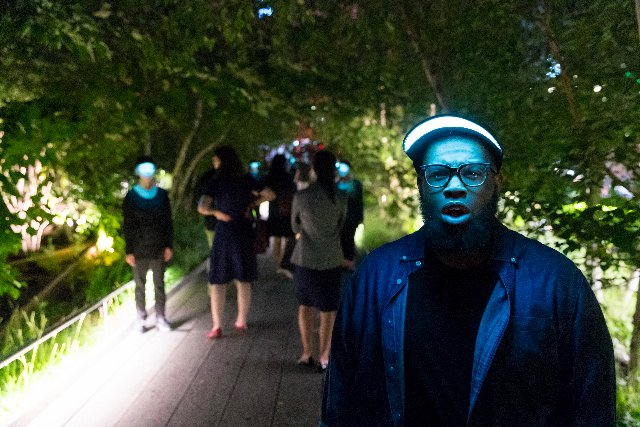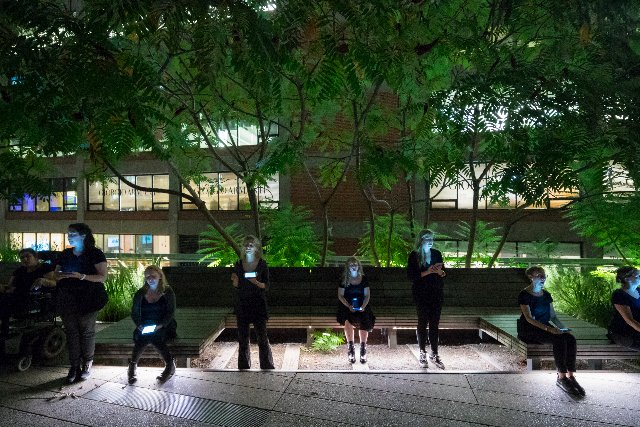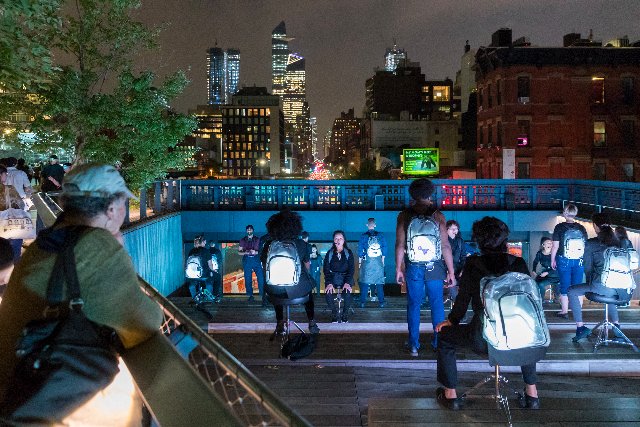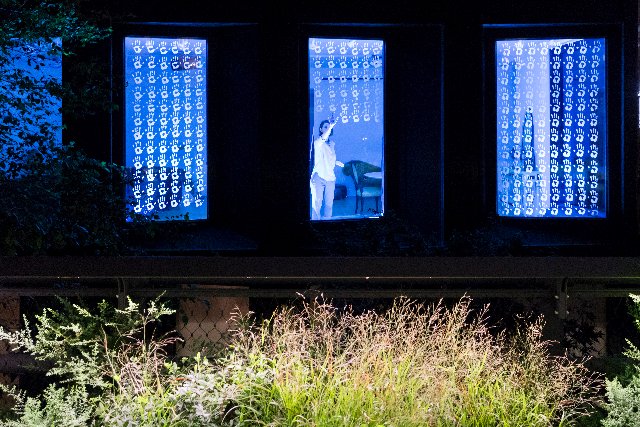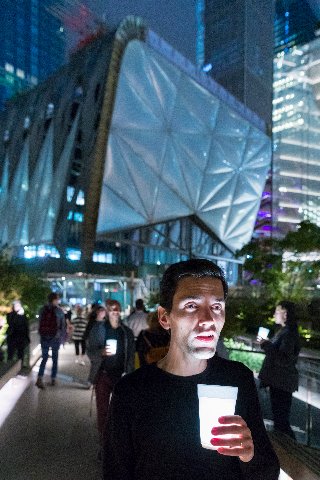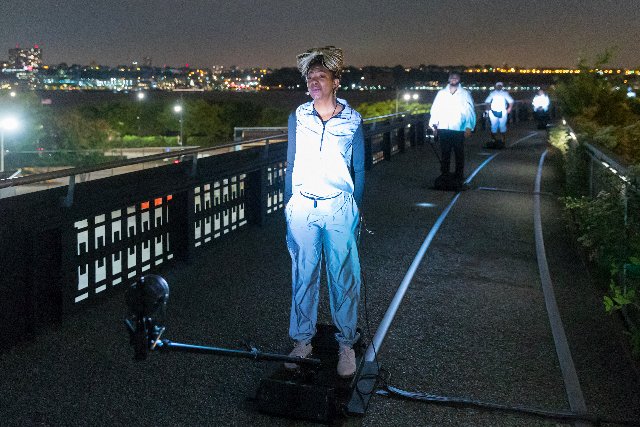Mile Long Opera at The High Line
Co-Created by Diller, Scofidio + Renfro and David Lang
By: Susan Hall - Oct 06, 2018
Diller, Scofidio + Renfro created the urban park we know as The High Line about a decade ago. Starting at what would become the Whitney Museum, then a twinkle in Renzo Piano’s eye, the park wends it way north following old railroad tracks. It passes ramshackle apartment buildings and a brilliant new one by the late, great Zaha Hadid. At 30th street it turns west past railroad yards and then north and east hovering along the southern wall of the Javits Convention Center. It is a marvel. From its inauguration, walks along the High Line felt like a big urban hug from old industrial elements and new plantings.
Elizabeth Diller is the credited architect, with assistance from James Corner Field, a landscape architect. The five hundred trees are difficult to identify as dark replaces dusk.
The High Line is a big idea writ large, just like operas. It forms an intriguing set for Mile Long Opera.
Diller gets a director’s credit for an opera written specially for this location by David Lang. Anne Carson is librettist and Claudia Rankine, essayist.
Mile Long Opera is subtitled, a biography of 7 pm, a time of transition from work to home. We are reminded, by people cleaning the windows of apartments and offices along the walk, that some people continue to work after 7. Perhaps they are Lili who “smiles at work until 8:30.”
Starting on the path for this opera, we meet figures in black, illuminated only by light under the brims of their baseball caps. I try to distract one singer by standing very close, in her face. Yet she is imperturbable. What does interactive mean, I wonder.
Some actor/singers are automatons. Others individualize their performance. Bringing together many voices is a challenge, met with bravura conducting by Donald Nally. When you have many diverse voices they can sound as one. Many of the voices here are looped, repeating over and over the words of the poem of their group. Some are sung. Others spoken.
Lang’s music is expressed in some lovely, simple lines. Sometimes they are endlessly repeated solo. At others they mix together without ever seeming to clash. Lang's music is captivating and fluent without being too knowing. This is not a neat piece, for neatness might tame the untamable.
Voices are separated in time, your time as you walk, or stop. Voices do not provide unity, but the High Line does, as it gathers the walking listeners in.
Tables are mentioned in many of the poems. This is dinner time, and a table is a central gathering place. Rattling in the memory is the line from the 23rd Psalm, "Thou preparest a table before me in the presence of mine enemies.” How is it possible that an enemy could be dangerous with all these tables around us. Is the High Line itself a table?
Groups of actor/singers were massed at the shed at 16th Street, and also at the bleachers' area hanging over Tenth Avenue where you can watch vehicular traffic pass by.
If you press up against a singer/actor, you can follow one entire poem. If you step back, or stand in the midst of a group of singers, the language becomes babble. Yet you hear certain key words clearly. Our movement is the plot.
Musical tones course around the center of the voice. A few dramatic sopranos and some deep basses are distinguished. Actor/singers appear to be making their own decisions about volume and the degree to which gesture will be used. Animated performances draw you in. You also feel a restraint in the presence of a huge city.
Midway through the procession of audience members, voices cry out, “Amanda will you marry me? “ I lean over and say “Yes” to one lady standing below me. She looks up and says “You’re sweet.”
Curiously I was unaware of being part of a group as we moved through the High Line. Darkness covers us, leaving only the various lights used to partially illuminate the singers shining. John Torres and Carlos J. Soto provide perfect lighting and costumes.
A thousand points of light brings an extraordinary evening to the High Line.

